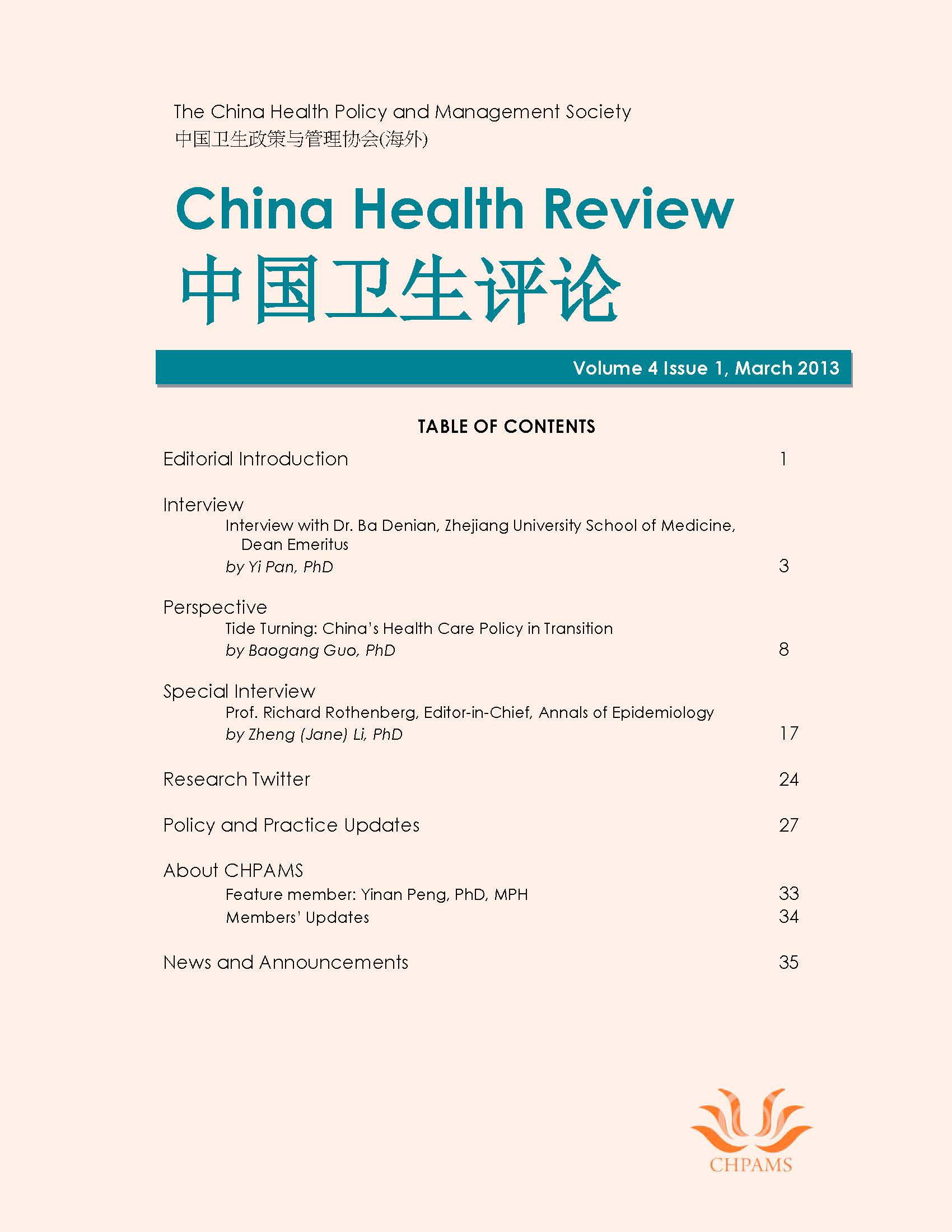Tide Turning: China’s Health Care Policy in Transition
Anahtar Kelimeler:
Health Care Expenditure- Public WelfareÖzet
This article systematically reviews the historical process of China’s healthcare system reform, and provides his prospective on the future reform direction. The author examined the unintended consequences of China’s market-oriented healthcare reform since the collapse of the socialized health system in 1979, including the sharply decreasing health insurance coverage, diminishing public health prevention services, increasing healthcare costs and worsening inequalities, resulted from the reduction in public health expenditures. In response to the collapse of universal health system, a new Urban Basic Medical Care Insurance System for Staff and Workers (UBMCI-SW) was started in 1993 for urban employees; the New Rural Cooperative Medical System (NCMS) was reestablished in October 2002 for the rural residents; and various forms of medical care insurance schemes were established starting in 2007 to provide coverage for the elderly, children and migrant farmer labors. China has achieved a significant success in restoring its universal healthcare system in one decade, in spite of the limited health services and scope of illness coverage. Witnessing the currently heated debate over whether the future reform direction should focus on marketization or public welfare, Dr. Guo believes that the reform-minded China’s new government will increase public expenditure and focus more on the welfare function of healthcare system.Referanslar
WHO, The World Health Report 2000, 152.
Wang Yonghun, “Zhonguo de Caizheng Jundenghua yu Zhuanyi Zhifu Tizhi Gaige [China’s Fiscal Equity and Reform of Fiscal Transfer System],” Zhongyang Caijing Daxue Xuebao [Journal of Central China Finance and Economics University] 9 (2006): 1-15.
MOH, “Statistical Release of the 3rd National Health Survey,” December 12, 2003, http://www.moh.gov.cn (accessed January 2, 2010).
MOH, Statistical Summary Report of China’s Health Care (1997-2001), http://www.moh.gov.cn/ (accessed January 10, 2010).
Chris L. Peterson and Rachel Burton, U.S. Health Care Spending: Comparison with Other OECD Countries, Congress Research Service Report, September 2007.
The other two are education and housing.
CCP Central Committee, “Decisions on Market Reform.”
It varies among different age groups. Younger workers will get much less from employers’ contribution, while older workers will get more.
Although it is currently pooled together by cities and counties, it may go up to a higher level, such as provinces, in the future, according to an official document.
Commission on System Reform, State Council, “Decision on the Experiments of Employee Health-care System,” Commission on System Reform Document No. 51 (1994); Office of State Council, “Decision on Expanding Employee Health-care Reform Trials,” State Council, Document, No. 16 (1996).
The CCP Central Committee and the State Council, “Decision on Health-care Reform and Development,” CCP Document, No. 3 (1997), January 15, 1997.
Zhou Beichuan, “Investigation and Discussion on the Separation of Hospitals from Enterprises,” People’s Daily, November 24, 2000.
The CCP and the State Council, “Decisions on Strengthening the Works of Rural Health Care,” October 20, 2003, http://www.people.com.cn/ (accessed January 10, 2010).
MOH, “Circular on Developing and Perfecting Rural Cooperative Health System,” May 28, 1997. http://www.people.com.cn/ (accessed January 10, 2010).
Hao Xiao and Yuan Zhou–kang, “Analysis of the Implementation of Out-patient Pooling Funds of the New Rural Cooperative Medical System in the Central and Western Areas of China,” Chinese Journal of Health Policy 2, no. 5 (May 2009): 45-49.
Chinese Center for Disease Control and Prevention, “Main Statistical Result of the 4th National Health Survey,” http://www.chinacdc.net.cn/ (accessed January 10, 2010).
The State Council, “Opinions on the Pilot Project of Urban Resident Health Insurance System,” http://www.gov.cn/zwgk/2007-07/24/ (accessed December 29, 2009).
NBS, Annual Statistical Report (2008), http://www.stats.gov.cn/ (accessed January 10, 2010).
The Development Research Center (DRC) of the State Council, Assessment and Recommendations of China’s Health Care Reform (Executive Summary), http://www.china.com.cn/chinese/health/927874.htm (accessed on January 10, 2010).
The State Council, “The Implementation Plan of the Near-term Priorities of Pharmaceutical and Medical Care Reform,” the State Council, Document No. 12, 2009, http://www.gov.cn/zwgk/2009-04/07/ (accessed January 16, 2010).

